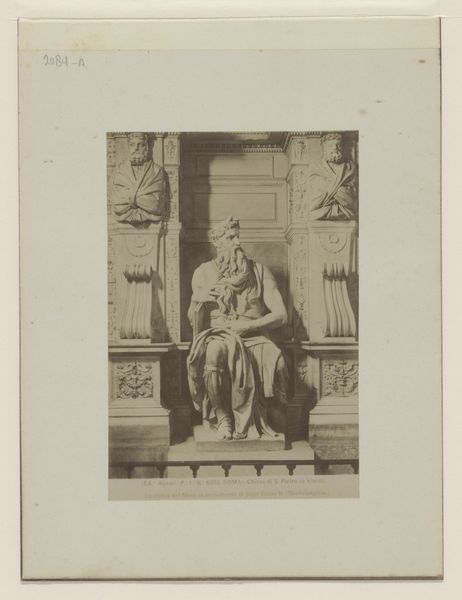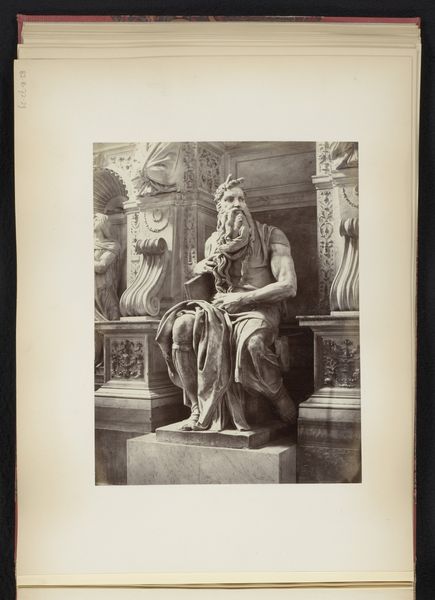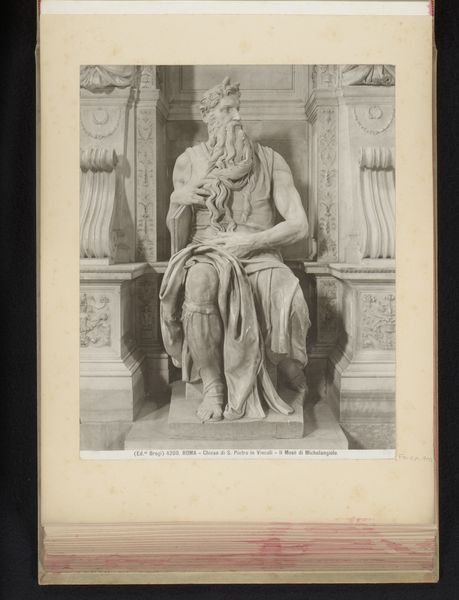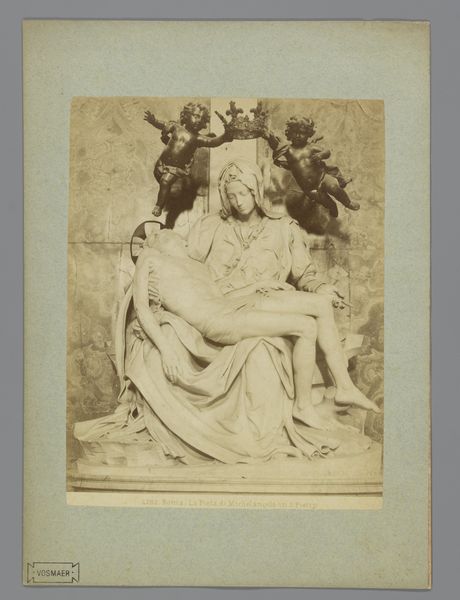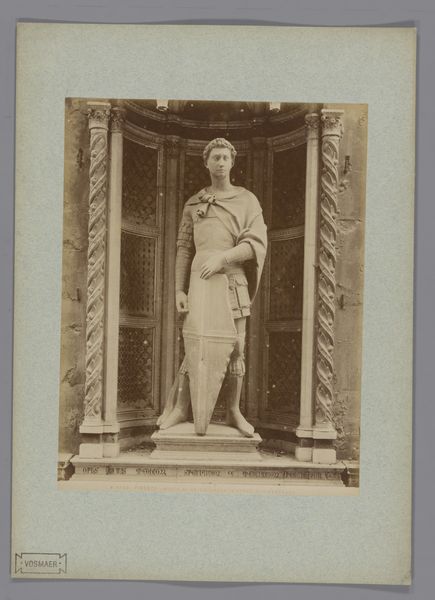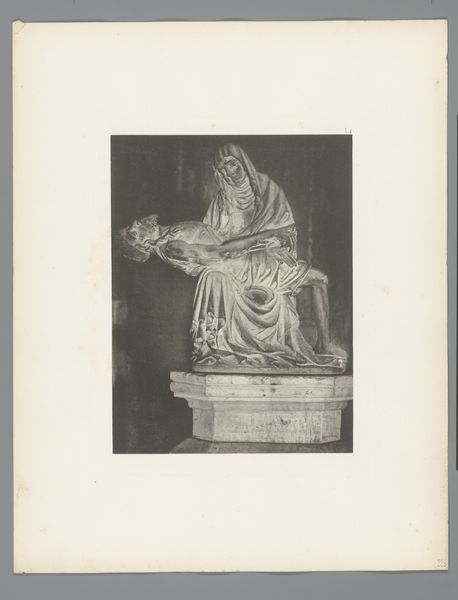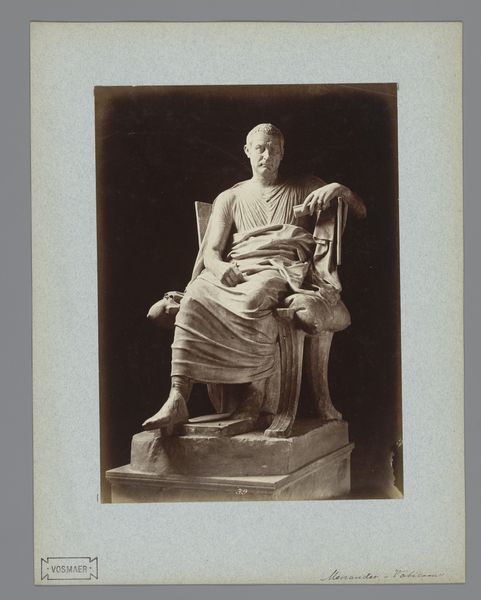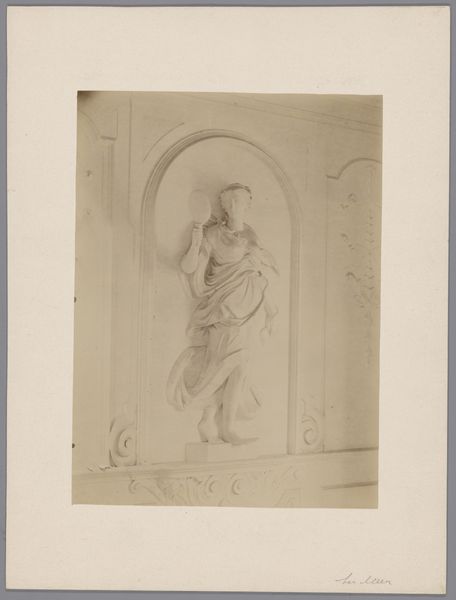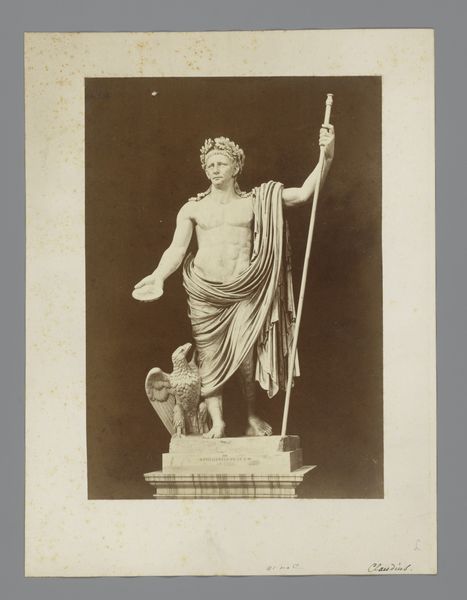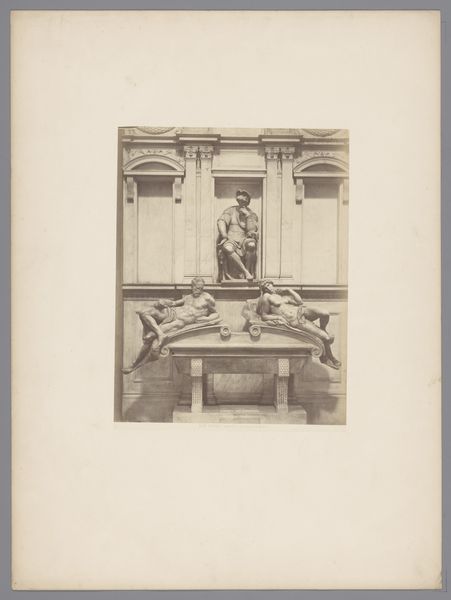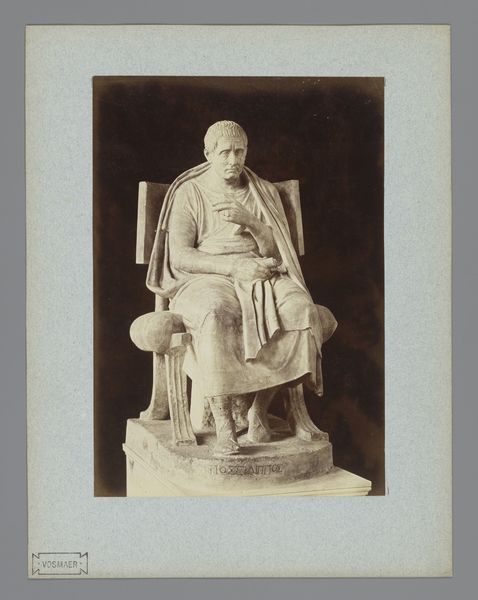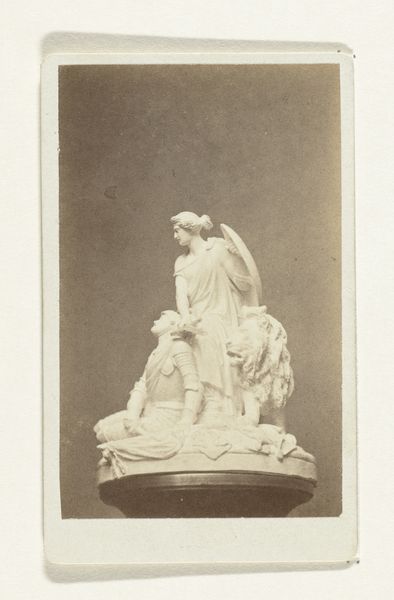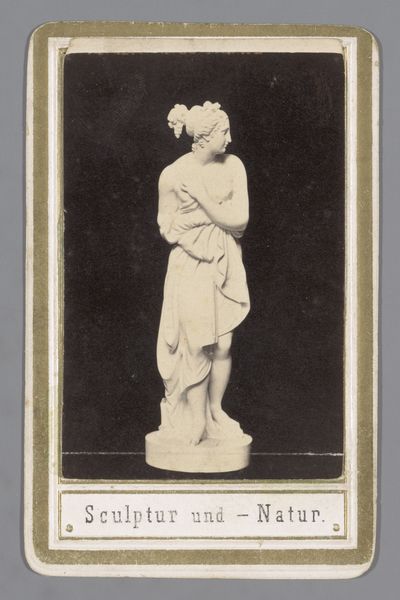
Sculptuur van Mozes naar Michelangelo in de San Pietro in Vincoli te Rome, Italië 1852 - 1890
0:00
0:00
fratellialinari
Rijksmuseum
Dimensions: height 355 mm, width 255 mm
Copyright: Rijks Museum: Open Domain
Editor: This gelatin silver print, taken sometime between 1852 and 1890, is after Michelangelo’s sculpture of Moses in San Pietro in Vincoli in Rome. What strikes me is the realism, how the photographer captured the sheer power of the sculpted form. What historical context should we keep in mind when looking at this piece? Curator: That’s a great starting point. Consider this image not just as a reproduction, but an object produced in a specific historical moment. Photography in the mid-19th century was rapidly changing how art was disseminated and understood. How might the accessibility of images like this – think about their widespread distribution – have impacted the perception of Michelangelo and Renaissance ideals amongst the general public? Editor: That’s fascinating. So, instead of only being available to those who could travel to Rome, this photograph allowed anyone to engage with this artwork. Did this wider reach change its cultural meaning? Curator: Precisely. Suddenly, the heroic figure of Moses was divorced from its original context – the Pope Julius II's tomb. It entered a visual economy. This connects with Neoclassicism’s aims of making classical art accessible and relevant to contemporary society, right? The photographic print aided in this process on a grand scale. Editor: I hadn’t considered the Neoclassical element and how photography accelerated its objectives. Was there a specific agenda that photographic studios like Fratelli Alinari might have promoted through these reproductions? Curator: Definitely. They participated in constructing and reinforcing cultural hierarchies. Think about the politics of representing masterpieces, reinforcing notions of Western artistic supremacy, and controlling the narrative around ‘great’ art. These photographs shaped the cultural landscape and dictated which art was valued and seen. Editor: This is an eye-opening perspective! It pushes us to consider the image not just as a faithful copy but also a carefully constructed cultural artefact in its own right. Thanks for showing how images influence cultural identity. Curator: My pleasure! Always remember that visual media shapes what and how people think, and who gets to decide which stories are worth remembering.
Comments
No comments
Be the first to comment and join the conversation on the ultimate creative platform.
